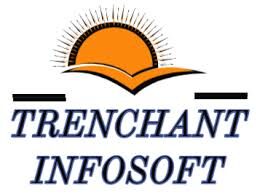
E-invoicing and e-way bills are digital initiatives that streamline and simplify invoicing and transportation processes for companies. They are often mandated by government regulations in many countries to ensure transparency, reduce tax evasion, and enhance operational efficiency. Here’s an overview of the requirements and benefits of e-invoicing and e-way bills in companies:
E-Invoicing: E-invoicing refers to the process of electronically generating, sending, receiving, and managing invoices between trading partners. It involves digitally capturing and transmitting invoice data directly from the seller’s system to the buyer’s system, ensuring accuracy and minimizing errors. E-invoicing can offer several benefits to companies:
- Reduced Errors: Manual data entry errors are minimized, as the invoice data is electronically transferred between systems.
- Faster Processing: E-invoices can be processed more quickly than traditional paper-based invoices, leading to faster payments and improved cash flow.
- Cost Savings: Companies can save costs related to printing, paper, postage, and manual processing.
- Compliance: E-invoicing helps companies comply with tax regulations and reporting requirements more effectively.
- Real-time Tracking: Companies can track the status of invoices in real-time, ensuring transparency and accountability.
- Environmental Impact: E-invoicing reduces paper usage, contributing to environmental sustainability.
E-Way Bill: An e-way bill is an electronic document required for the movement of goods in transit. It includes details such as the consignor, consignee, type of goods, vehicle details, and the route. E-way bills are designed to ensure the proper documentation of goods being transported and to prevent tax evasion. Key benefits of e-way bills include:
- Regulatory Compliance: E-way bills are mandated by many countries to ensure that goods are being transported with the necessary documentation.
- Efficient Logistics: E-way bills streamline the movement of goods by providing a standardized process for transit.
- Reduced Checkpoints: E-way bills reduce the need for physical checks at state borders or checkpoints, leading to faster transportation.
- Transparency: E-way bills provide real-time visibility into the movement of goods, helping authorities and businesses monitor the supply chain.
- Data Accuracy: E-way bills reduce the chances of errors and discrepancies in transportation documentation.
Both e-invoicing and e-way bills are integral parts of the digital transformation of business operations. Companies implementing these systems often need to consider the following:
- Technology Infrastructure: Ensure that your company’s ERP or financial systems can generate and process e-invoices and e-way bills.
- Compliance: Understand the legal and regulatory requirements of e-invoicing and e-way bill generation in your region.
- Integration: Implement systems that seamlessly integrate e-invoicing and e-way bill generation with your existing business processes.
- Training: Train employees on using the e-invoicing and e-way bill systems effectively.
- Data Security: Maintain data security protocols to protect sensitive information during electronic transactions.




